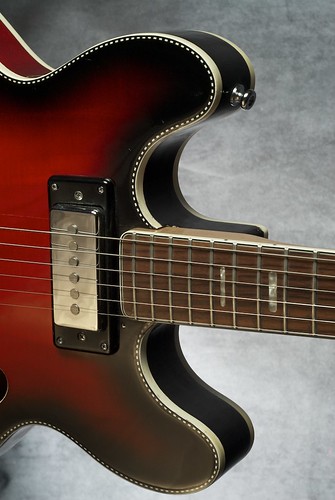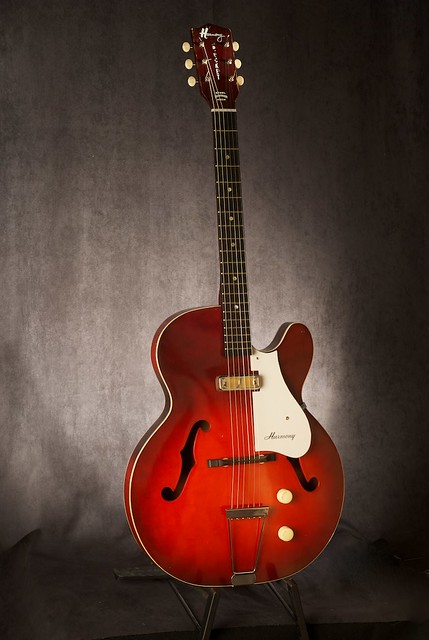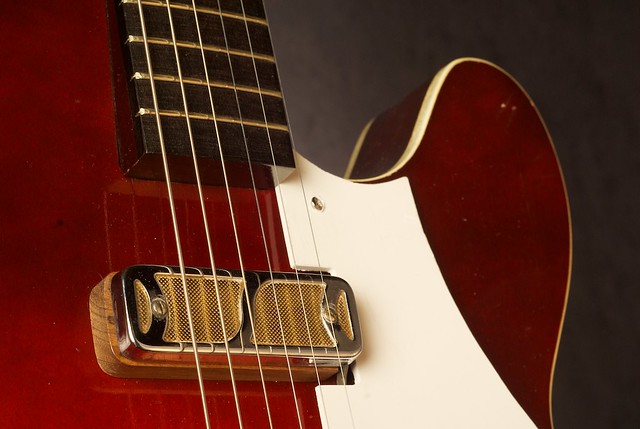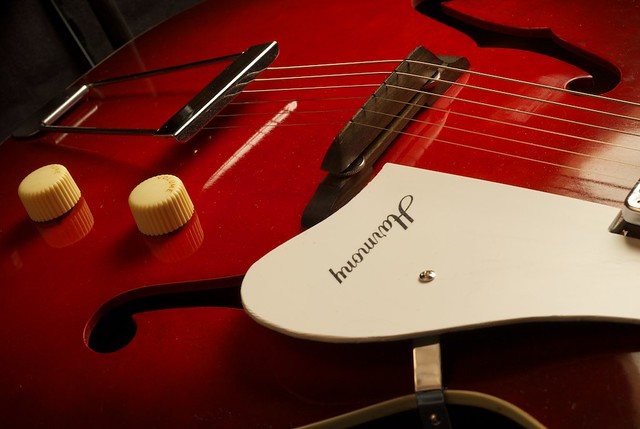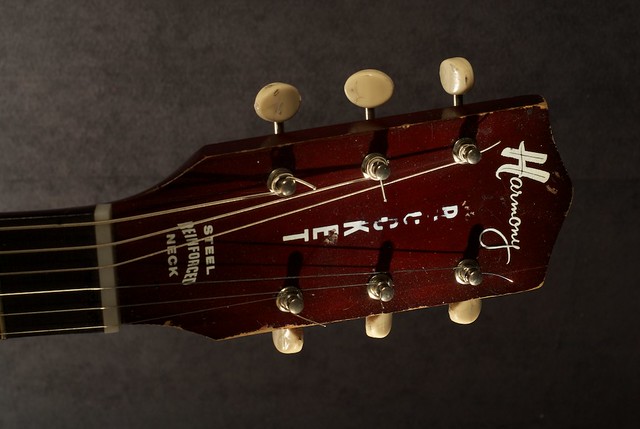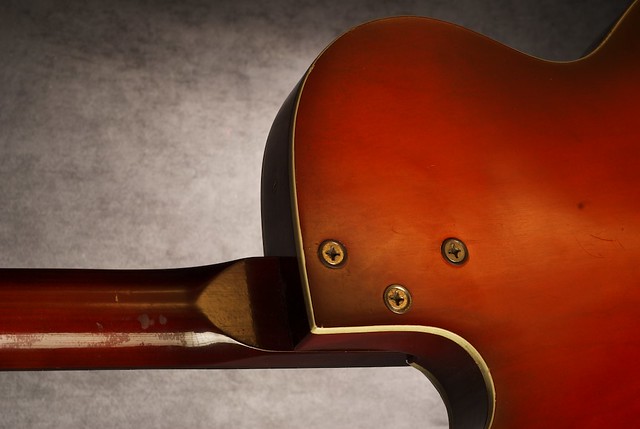 I picked this guitar up in virtual mint condition because it played and sounded so nicely for a bolt-on neck guitar. It was advertised as a possible Univox from the '80s but after some serious research I believe it is a Matsumoku-built guitar of the same quality as some of the Vox guitars, and most likely the '70s (because the headstock is very Gibson like... almost exactly Gibson.. which was a no-no by the late '70s because of all the lawsuits). The trapeze system is seen on similar guitars, and Matsumoku were one of the only factories that built guitars with the tone and volume knobs placed *away* from the f-hole, as opposed to scattered around the f-hole. Seriously, take a look at others. You won't find a Univox like this but there are some of similar Vox build quality that are like this.
I picked this guitar up in virtual mint condition because it played and sounded so nicely for a bolt-on neck guitar. It was advertised as a possible Univox from the '80s but after some serious research I believe it is a Matsumoku-built guitar of the same quality as some of the Vox guitars, and most likely the '70s (because the headstock is very Gibson like... almost exactly Gibson.. which was a no-no by the late '70s because of all the lawsuits). The trapeze system is seen on similar guitars, and Matsumoku were one of the only factories that built guitars with the tone and volume knobs placed *away* from the f-hole, as opposed to scattered around the f-hole. Seriously, take a look at others. You won't find a Univox like this but there are some of similar Vox build quality that are like this.One theory is that this might have been branded for Radio Shack as a "Realistic". Yep, believe it or not, Radio Shack sold guitars at one point! This wasn't uncommon as many electronics and radio companies sold their own branded guitars and amps from catalogs and even stores. Lafayette, for instance.
I describe this as an ES-330 copy and not so much an ES-335 because most ES-335s didn't have the trapeze. The pickups must be single coils, and are a bit noisy in certain positions but they sound really nice and edgy like P90s. When I think of Gibson ES-330 or ES-335 type guitars I think of their amazing bell tones where you can really hear the wood but at the same time you get this glass-like tone that really rings, and this one's got it.
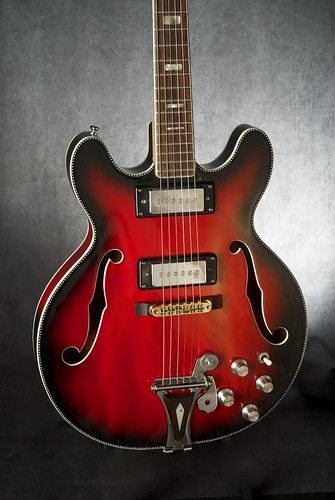 I used to have an Ibanez Gibson ES-345 copy, a lawsuit era guitar as well, and that thing was so light and frail, and the neck would easily bend with any movement. Those early lawsuit era guitars now go for $800 and up to collectors. This lawsuit-era guitar is way higher quality in my opinion, yet it doesn't carry the Ibanez lawsuit desirability and so is much more affordable. I'd put it at a better quality than the recent Ibanez Artcore series guitars as well, and I've played a lot of them. It just feels better. More solid.
I used to have an Ibanez Gibson ES-345 copy, a lawsuit era guitar as well, and that thing was so light and frail, and the neck would easily bend with any movement. Those early lawsuit era guitars now go for $800 and up to collectors. This lawsuit-era guitar is way higher quality in my opinion, yet it doesn't carry the Ibanez lawsuit desirability and so is much more affordable. I'd put it at a better quality than the recent Ibanez Artcore series guitars as well, and I've played a lot of them. It just feels better. More solid.I don't have a twang bar for it but the tremelo system works if you can find one. Also the original bridge had plastic rollers and missing wooden bridge support, so these were replaced with a nicer Tun-o-matic style bridge and wood support. The result is a nice player with a unique vintage sound, ie. don't expect to sound like a modern ES-335 with its bolted stop-tail, humbuckers and infinite sustain, but there is plenty of sustain for blues and vintage rock sound as you can tell in the video below.

